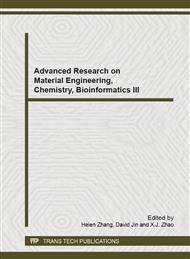p.388
p.392
p.398
p.403
p.411
p.416
p.422
p.426
p.431
Study on Energy-Saving Technology of Rural Residential Envelope Structure in Cold Regions
Abstract:
The energy-saving of envelope structure plays an important role in building energy conservation, so the first step to save rural residential energy is energy-saving of envelope structure. Basing on the purpose of building ecological and sustainable new countryside housing, this article intensively studies the present condition of energy-saving rural residential envelope structure in cold regions, proposes corresponding energy-saving measures, calculates the quantity and the rates of energy saving , payback period after taking energy-saving measures on the basis of modeling ,and indicates its feasibility and importance.
Info:
Periodical:
Pages:
411-415
Citation:
Online since:
October 2013
Authors:
Keywords:
Price:
Сopyright:
© 2014 Trans Tech Publications Ltd. All Rights Reserved
Share:
Citation:


